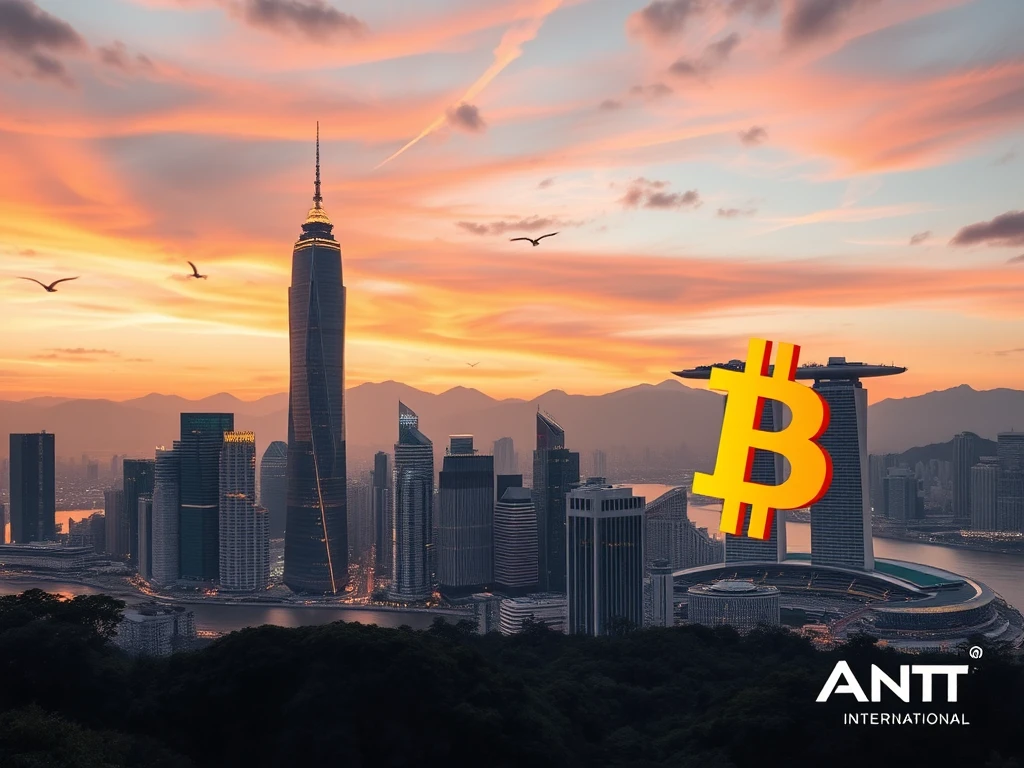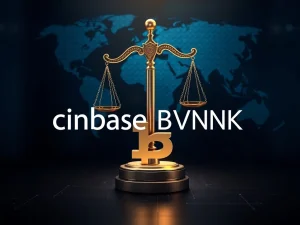Stablecoin Regulation: Major Move as Ant International Eyes Hong Kong and Singapore Licenses

Big news shaking up the world of digital finance! Ant International, a key part of Jack Ma’s Ant Group empire, is reportedly making significant strides into the regulated crypto space. They’re planning to apply for licenses to issue stablecoins in two major Asian financial hubs: Hong Kong and Singapore. This move is a strong signal about the growing confidence in stablecoin regulation and its potential to reshape global payments and finance.
Ant International Sets Sights on Asia’s Financial Hubs
So, what’s the scoop? According to recent reports, Ant International, the Singapore-based unit of Ant Group, is gearing up to dive deep into the stablecoin market. They’re known globally as an affiliate of Alibaba Group and operate the massive Alipay digital payment platform, serving over a billion users and millions of merchants worldwide. Their interest in stablecoins isn’t just casual; it points towards a strategic integration of regulated digital currencies into their vast financial network.
The plan involves applying for licenses in both Hong Kong and Singapore. This isn’t a small step; it means navigating complex regulatory frameworks designed to bring stability and compliance to the crypto world.
Why Hong Kong Stablecoin Licenses Matter Now
One major driver for Ant International’s timing is the clear path being laid out in Hong Kong. The city recently passed its first licensing regime specifically for fiat-based stablecoins. This new law, the Stablecoin Ordinance bill, was approved on May 21 and is set to become fully effective on August 1.
Here’s what the Hong Kong stablecoin framework means:
- Issuers of stablecoins linked to fiat currencies must obtain a license.
- The licensing authority is the Hong Kong Monetary Authority (HKMA).
- Non-compliance carries significant penalties, including fines up to 5 million Hong Kong dollars (around $640,000).
This clear regulatory structure provides a formal pathway for large financial institutions and fintech companies like Ant to operate legally and compliantly, reducing uncertainty and increasing trust.
Singapore Stablecoin Ambitions
Beyond Hong Kong, Ant International also has its eyes set on Singapore. While the specific details of their application plans in Singapore are less public at this moment, the intention signals confidence in Singapore’s approach to digital asset regulation.
Singapore has been actively working on frameworks for stablecoins, aiming to establish itself as a hub for regulated crypto activities. Ant’s move to seek a Singapore stablecoin license alongside Hong Kong underscores the strategic importance of these two Asian powerhouses in the future of digital finance and cross-border payments.
Fintech Crypto: Ant’s Strategic Play
Why is a giant like Ant International getting into stablecoins? Their interest is tied directly to enhancing their core financial operations. They reportedly plan to use stablecoins for crucial functions like cross-border payments and treasury management services.
Consider this: In 2024, a third of Ant International’s staggering $1 trillion global transactions were processed through their blockchain-based Whale platform. Integrating stablecoins could streamline these processes, making them faster, cheaper, and more transparent. This highlights how established fintech crypto integrations are becoming increasingly common and strategic for major players.
Ant Group and its affiliates aren’t new to blockchain technology. Back in December 2024, Ant Digital partnered with the Sui layer-1 blockchain to tokenize real-world assets, specifically focusing on environmental, social, and governance (ESG) related initiatives. This background shows a foundational interest in leveraging distributed ledger technology for various financial and data management purposes.
The Broader Impact of Stablecoin Regulation and Growth
Ant’s pursuit of licenses aligns with a significant trend: the maturation of the global regulatory landscape for stablecoins. As more jurisdictions define clear rules, it opens the door for larger, more traditional financial and fintech firms to participate with greater confidence.
This development comes at a time when the stablecoin market itself is reaching new heights. Recently, the total stablecoin market capitalization surpassed its previous all-time high of $250 billion, according to data from DefiLlama. This growth isn’t just a number; it reflects increasing usage and demand.
Some experts believe this is just the beginning. David Pakman, a managing partner at CoinFund, suggested that the global stablecoin supply could potentially reach $1 trillion before the end of 2025. He sees this massive influx of value into the onchain world as a potentially significant catalyst for the entire cryptocurrency market. His perspective is that getting people’s wealth onto the blockchain is the missing piece needed to truly drive widespread adoption.
Ant International’s strategic focus on regulated stablecoins in key markets like Hong Kong and Singapore underscores this vision. It’s a clear indicator that major fintech players see a future where digital currencies, operating within clear stablecoin regulation, play a central role in global finance.
Summary: A New Era for Regulated Digital Payments
Ant International’s move to seek stablecoin licenses in Hong Kong and Singapore is a landmark event. It signifies the increasing convergence of traditional fintech powerhouses with the evolving crypto landscape, driven by clearer stablecoin regulation. This isn’t just about a company expanding its offerings; it’s about validating the role of regulated stablecoins in mainstream finance, particularly for crucial areas like cross-border transactions. As regulatory frameworks solidify in key markets like Hong Kong and Singapore, expect to see more major players like Ant International step in, potentially accelerating the growth and adoption of regulated fintech crypto solutions globally. The journey towards a trillion-dollar stablecoin market seems more plausible than ever with such significant players leading the charge under regulated conditions.







